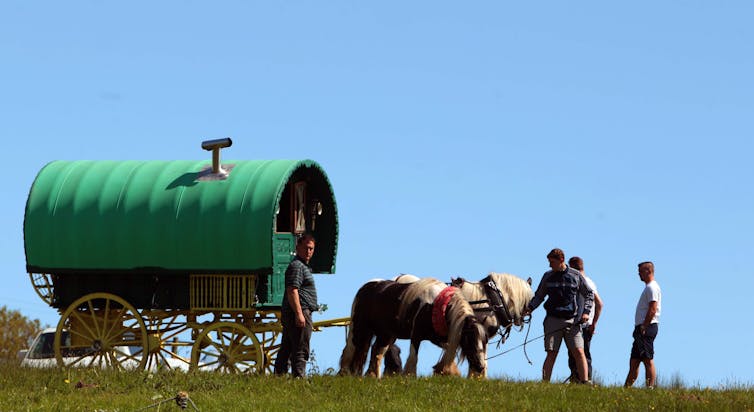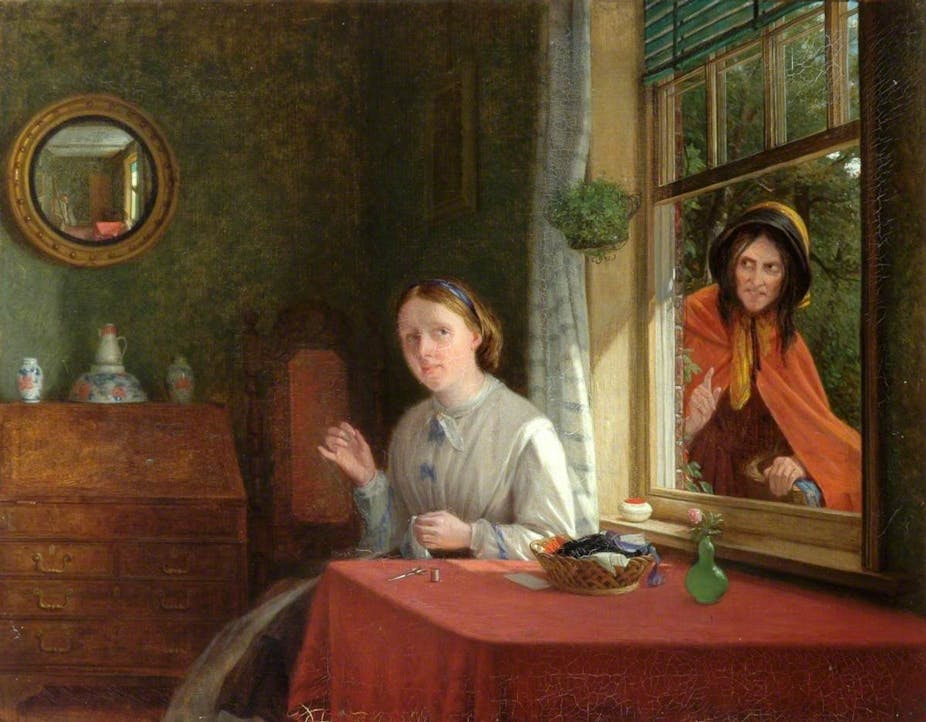The Conservative Party’s manifesto commitments to “tackle unauthorised traveller camps” and give police new powers to seize Travellers’ property and vehicles play to an age-old view of travelling people as criminals. The manifesto argues this is “to protect our communities”, resolutely placing Travellers outside a Tory concept of “community”, and playing to centuries-old suspicions and prejudices.
British Romani and Traveller people are wearyingly familiar with this political rhetoric as repeated in newspapers, on television and in the playground. In his magisterial The Stopping Places from 2018, Damian Le Bas described his relationship with travelling, with being a Traveller and to Britain. From a young age, he realised that “the land I lived in would never allow me to forget that it saw the Gypsies as a people apart”. The Romani academic Ken Lee has pointed out that no matter when or where, Romanies have been seen as strangers.
The word “Gypsy” is an exonym derived from “Egyptian”, which is how Romani people were described when the diaspora was first noted in Britain. The first record of Romanies in England is sometimes given as an inquest in 1514 that mentions an Egyptian woman, though there is also evidence for a much earlier presence. A 10th-century skeleton unearthed in Norwich has a DNA sequence matching a rare modern Romani lineage.
Read more: Gypsies and Travellers 'clampdown' is less dog whistle, more political fog-horn
As well as being called Gypsies, British Romani people are often referred to (or refer to themselves) as Travellers. Irish Travellers in Britain and other travelling groups have a separate community history to Romani people, although laws, politics and attitudes have led them to share many experiences.
The stereotype of the Gypsy criminal is neither new, nor exclusive to Britain. Yet it has a disturbingly pernicious cultural power. As a document signifying attitudes and aspirations, the Conservative Party manifesto of 2019 joins a long list of representations – in law, the media, visual arts and fiction – that contribute to the false impression of Romanies or Travellers en masse as criminal outsiders.
Different century, same attitude
Almost from the outset, Gypsies were subject to the force of the law. The Egyptians Act of 1554 introduced the death penalty for “Egyptians” who refused to leave the country. The Tudors wanted real control over who was coming in and out.
Almost two centuries later, on New Year’s Day 1753, a teenage maidservant called Elizabeth Canning was apparently kidnapped from the City of London to be forced into prostitution in Enfield, some miles away. She claimed that, after several weeks in starving captivity, she escaped through a window. The woman who owned the brothel was sentenced to branding of the thumb, and Mary Squires, a Gypsy, who was said to have assisted, was sentenced to death by hanging.
The sensational media reporting of the time was sure of Squires’s guilt because she was a Gypsy. But their stereotyping was wrong: Squires had an alibi and received a full pardon. Another story about the case mentioned a street-seller supposedly beaten and robbed by Gypsies as “a further instance of their Barbarity to our Subjects, which shews the immediate Necessity of rooting these Villains out of their Dens”. In 1753 as in 2019, the easy line for the press to take was that “our” communities needed protecting from these criminal outsiders.

A century later, and an 1865 painting by Thomas George Webster called The Gypsy hangs in the Smith Art Gallery in Brighouse, West Yorkshire. Webster’s image portrays a dark-haired, sharp-faced Gypsy woman emerging from the foliage outside an open window, besides which a pale girl sits sewing. A small white pot on the windowsill is easily reachable through the window. The painted scene implies that the Gypsy woman will steal from the other, and the girl’s expression suggests that the wide-open window suddenly seems a mistake.
This minor moment in art history may seem innocuous, but it is part of the steady drip, drip of cultural references in which Gypsies and Travellers are painted, metaphorically or literally, in a particular light. Throughout the 19th century, novels, poems and books for children portrayed Gypsies as suspect and to be feared.
Each century has its Gypsy and Traveller suspects, across all cultural forms and varied audiences. It is no surprise that, with this cultural history, politicians claim again and again to want to take action against these groups’ perceived criminality. The opposition of police forces to the Home Office’s proposed policy on unauthorised encampments shows how much the Conservative’s manifesto pledge is about image rather than well-researched policy. It is the same image that has been informed by centuries of fictional but powerful representation.
The British state does not need special protection from Romani and Traveller communities. With their social and cultural contributions to British life ignored or deemed worthless, it is Romani and Traveller people that need protecting from an over-zealous state.

